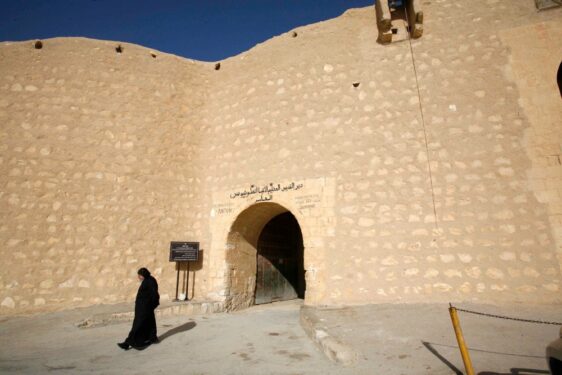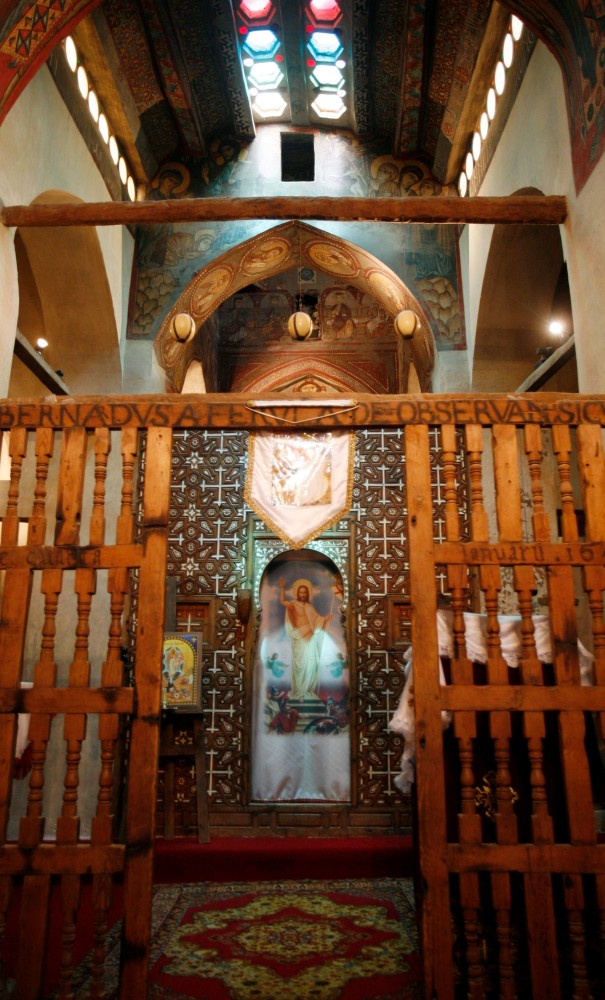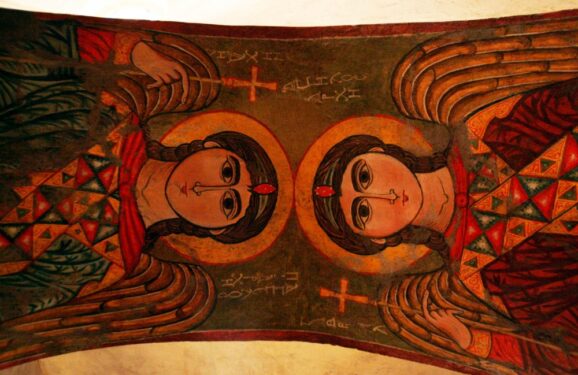
By Engy Magdy
CAIRO — In an oasis in the eastern desert of Egypt hidden deep in the Red Sea Mountains 140 miles southeast of Cairo, sits the oldest monastic building in the world, dating back to the third century. The Monastery of St. Anthony was formed in a cave inside a mountain by St. Anthony, the founder and father of Christian monasticism.
The most interesting and visited place is a small cave that looks like a crack in the mountain. The small cave is located 3 miles up Mount Al-Qalzam where St. Anthony lived. To reach the cave, you must start a long journey of climbing 1,420 steps from ground level to the top of the mountain, which takes about an hour and a half. The stairs are bordered by an iron fence.
During the journey, you find the words of St. Anthony written on both sides of the stairs on the way up. The mountain path to the cave has rest areas that can accommodate 20-25 people to rest as they ascend.
At first glance, you wonder how a person could make a residence at that height when he has to go down and up every day to get his daily needs, but as soon as you start the ascent, you feel an enthusiasm that pushes you upward, as if it is the closest way to communicate with heaven.
At the entrance to the cave, a large square on the side of the mountain is protected by high iron walls. The square, which bears a sign reading “I love you so much oh Lord” can accommodate 100 to 150 people. Inside the cave is a small altar on which is mounted a picture of Christ and St. Anthony, and a picture of St. Anthony and St Paul.

Inside that narrow cave, which accommodates one person at a time, you are overwhelmed by a spiritual feeling that transports you to the divine world. There is a comfort and reverence when you enter sacred places, but it is doubled, and has captivated the hearts of pilgrims and adventurers for centuries.
St. Anthony was born to a rich Christian family about A.D. 251 in the village of Kemmen El-Arous, near the city of Beni Suef in upper Egypt. As a youth, St. Anthony grew up in the church absorbing all its biblical teachings. His love for Christ grew as each day passed. At the age of 20, he lost his parents and inherited their vast wealth. However, he abandoned everything in favor of a path to ascetic life.
Attending church one day, he heard Jesus’ words to another rich young man in the biblical narrative: “If you wish to be perfect, go, sell what you have and give to [the] poor, and you will have treasure in heaven. Then come, follow me.” Anthony felt those words spoke to him directly and he started his new life in the desert.
Followers of St. Anthony were the first Christian monks, and built the Monastery of St. Anthony and many others throughout Egypt. The monastery, also known as St. Paul and St. Anthony Monastery, has been home to a community of monks for thousands of years. Even as the outside world changes and the monastery adapts to modern life, they have remained dedicated to their life of prayer, contemplation, and humility.
Inside the monastery are 10 churches, including the Church of the Four Incarnate Beasts, the Church of the Archangel Michael, the Church of the Virgin Mary, the Church of the Apostles Peter and Paul, and others.
Inside the complex, another Monastery of St. Paul dates back to the fourth century and was built around the cave where Paul lived. St. Paul’s monastery is quieter, smaller, and much more low-key than St Anthony’s.
The two monasteries are located at the southern edge of Wadi Araba, which is a great valley formed in the sandstone of the lower Cretaceous period. Its width is about 19 miles from north to south, and the area drains from west to east toward the Red Sea, according to a description by Atef Moatamed, professor of physical geography at Cairo University.

“The story of the monastery and the biography of St. Antonio remained unknown until the beginning of the seventh-century A.D. through the writings of European travelers, as few ventured to visit the two isolated monasteries,” Moatamed said. “The Monastery of St. Anthony and St. Paul represents a place of pilgrimage and a spiritual haven for Egyptian Christians, who want to draw inspiration from the spiritual life of asceticism and spiritual serenity,” he added.
Between 2004 and 2009, conservation work was carried out on the paintings and buildings throughout the historic monastic complex. Structural work at the Church of the Holy Apostles led to a surprising discovery; underneath was an earlier church structure, but below that, a group of even earlier monastic cells. These rooms would have been the living quarters of some of the earliest monks who resided at the monastery.
The Monastery of St. Anthony witnessed its golden age during the time of Patriarch John VI (1189-1216). The monastic community flourished in the monastery between the 12th and 15th centuries. From that ancient history until today, the Monastery of St. Anthony formed ecological relationships that brought monasticism and the desert together, linking what is religious, topographical, and environmental with what is ethnographic for the inhabitants of the desert from the Arab tribes, Moatamed said.
As a Christian structure, the monastery witnessed a long history of persecution under Roman emperors, then the Islamic invasion of Egypt, and the Bedouin raids. The monastery greatly influenced the Church and strongly influenced the formation of several Coptic institutions; several Coptic patriarchs have come from the monastery. Its library is renowned for its collection of ancient manuscripts, a key in contributing to the preservation of Christian heritage in Egypt.
